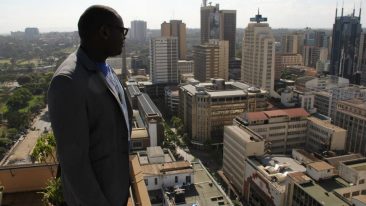he seventh greatest
wonder in the world". It is now officially known through out the
world. Many have come back time and again. They have witnessed this mass
movement of wild animals roaming free through unspoiled and savage wilderness.
The air fills with the click- click of the cameras tirelessly. You have not
seen something like this before.
Africa is changing at a
quick pace and human encroachment into the wildlife reserves has continued to
erase the traditional routes. In association with development and changes of
the way of life, the image of wildlife roaming free is slowly getting erased.
Fortunately, Masai Mara National reserve holds on to its charisma of an open,
limitless land. It is one of the places in Africa
that still prides in wildlife concentration.
Masai
Mara is located in the South-western of Kenya,
290 kilometers from Nairobi.
The abundance of wildlife and the remoteness of the reserve implants memories
that no money can buy.
The Migration
is a recent phenomenon (60's and 70's was the biggest boom) with about 250,000
individuals. Gradually, with time the number has risen to the current
population of over 3,000,000
individuals. Add to it an estimated
1,500,000 Zebras and the result is one of the most magnificent scenes in
the world. The massive display attracts
hundreds of big cats as the populations provide abundant prey. The giant
African crocodiles lie in wait, patiently, as the big herds come to cross the
river or to drink.
It is
the Masai community who are not so pleased with the whole phenomenon. The
wildebeests compete with their huge herds of boran cattle for the grasslands.
To them, it is a big calamity especially because the wildebeests transmit
diseases to their herds and poison the waters with their fetal sacs.
This world famous migration is a circle of
life which, in simple terms, means that there isn't a
start or an end. Only where the
herds are located at a particular time. The big determinant is the
availability of pastures. The plains of Ngorongoro Conservation Area
in Serengeti is a favored spot as grass abounds and the wildebeest find a
safe place to graze. It is also here that over
500,000 new calves are born and many are taken by the nearby waiting Jackals or
Hyenas.
New borns have little time to strengthen
their legs. As soon after birth, the
“pilgrim" continues. By April,
the rains are over in southern Serengeti and the plains have dried up. The
great herds then
gather and face the long march northwards and westwards. The natural lawn
mowers abandon
the exhausted grasslands of southern Serengeti to head for the already tall
grass of the Western
corridor, near the shores of Lake Victoria.
The
pioneers of the migration movement are the majestic herds of zebras. They
prefer the long
stems of the coarse grass. This way, they leave behind shorter grass which is
favored by the wildebeests.
In late
June to July the mass start pouring into the Kenya Masai Mara reserve where
fresh, tender
and mineral-rich grass is already waiting. Here they meet the resident Mara
populations which
add up to about 150,000. Also commonly referred to as the Loita plains herds,
they spend most of the season northeast of the Mara. When it gets dry, they
pour into the interior of the Mara in search of greener pastures.
The
migrating herds spend roughly 3 to 31/2 months in the Mara crossing through Sand River,
which is a tributary of the Mara along the boundary of Kenya and Tanzania. They trek westwards and
cross the Mara River
and sometimes the Talek
River. Usually around
this time heavy rains on the Mau Escarpment (origin of Mara
River) fill the Mara River
to the brim.
This is
a good time to watch the trunk-looking Crocodiles, while they await the
forthcoming feast.
Finally, the gnus (wildebeests) venture into the river. This gregarious
coordinated behavior of the herds, usually teamed with zebras, creates an
unimaginable scene. Just what the cameras have
been waiting for.
They wander along the river looking for a
convenient crossing point. This is a
moment
filled with tension for both the gnus (wildebeests) and the audience. They
survey for a less steep and with no obvious danger. Finally, one takes courage
and plunges into the river and magically the rest falls onto the footsteps and
in one organized line cross the river.
In
addition to the crocodiles, accidents also occur. The river’s current can be
too strong for some especially the young ones. Or simply getting stuck between
the rocks in the river and breaking limbs, a direct ticket to the jaws of the
giant crocodiles. Finally, the crossing is done and the trek to their unknown
(or known) destiny continues.
In the month of
October, they are already heading to
Serengeti where the rains have treated the southern grasslands to lush, green
carpet of rich grass. Once again, they
are heading to the southern plains, where a new generation will be born to
start the cycle of life all over again.
SOURCE: the internet.
NB. If you
missed the July migration from Tanzania
into Kenya, well the
wildebeests will be migrating again on October from Kenya
to Tanzania.



